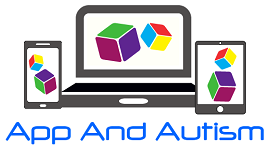Gli iPad possono favorire la comprensione simbolica e l'apprendimento di parole in bambini con autismo?
Do iPads promote symbolic understanding and word learning in children with autism?
Allen ML, Hartley C, Cain K.
Front Psychol. 2015 Feb 12;6:138. doi: 10.3389/fpsyg.2015.00138. eCollection 2015.
Abstract
The use of the Apple iPad has skyrocketed in educational settings, along with largely unsubstantiated claims of its efficacy for learning and communication in children with autism spectrum disorder (ASD). Here, we examine whether children with ASD are better able to learn new word-referent relations using an iPad or a traditional picture book. We also examine the hypothesis that presenting multiple, differently colored, exemplars of a target referent will promote adaptive label generalization compared to the use of a single exemplar. Sixteen minimally verbal children with ASD were taught a new word in four within-subjects conditions, which varied by media (iPad vs. book) and content (single vs. multiple exemplar presentation). Children were then tested on the ability to symbolically relate the word to a 3-D referent (real-life depicted object) and generalize it to a differently colored category member (another similarly shaped object). The extent of symbolic understanding did not differ between the two media, and levels of generalization did not differ across conditions. However, presentation of multiple exemplars increased the rate that children with ASD extended labels from pictures to depicted objects. Our findings are discussed in terms of the importance of content to picture-based learning and the potential benefits and challenges of using the Apple iPad as an educational resource for children with ASD.
The use of the Apple iPad has skyrocketed in educational settings, along with largely unsubstantiated claims of its efficacy for learning and communication in children with autism spectrum disorder (ASD). Here, we examine whether children with ASD are better able to learn new word-referent relations using an iPad or a traditional picture book. We also examine the hypothesis that presenting multiple, differently colored, exemplars of a target referent will promote adaptive label generalization compared to the use of a single exemplar. Sixteen minimally verbal children with ASD were taught a new word in four within-subjects conditions, which varied by media (iPad vs. book) and content (single vs. multiple exemplar presentation). Children were then tested on the ability to symbolically relate the word to a 3-D referent (real-life depicted object) and generalize it to a differently colored category member (another similarly shaped object). The extent of symbolic understanding did not differ between the two media, and levels of generalization did not differ across conditions. However, presentation of multiple exemplars increased the rate that children with ASD extended labels from pictures to depicted objects. Our findings are discussed in terms of the importance of content to picture-based learning and the potential benefits and challenges of using the Apple iPad as an educational resource for children with ASD.

